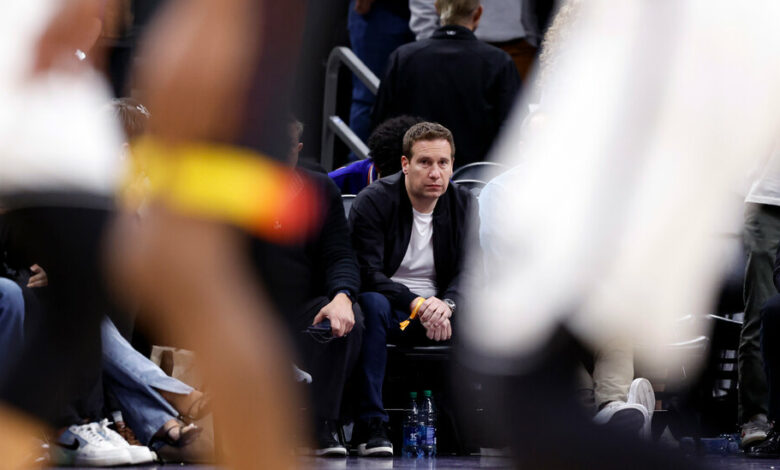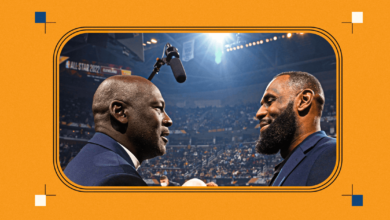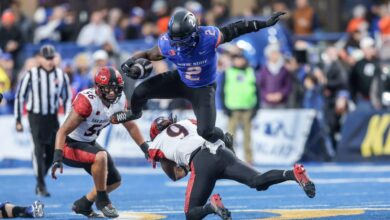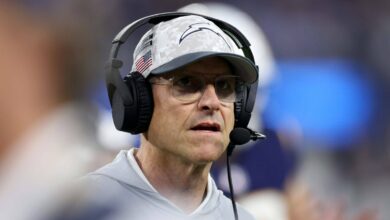How Phoenix fans view their teams could change the way you view yours

Days after Mat Ishbia entered into a deal in December to acquire a majority stake in the Phoenix Suns (NBA) and the Phoenix Mercury (WNBA), he met with top executives to learn more about the teams’ operations, including how local fans could watch their games on TV.
Executives gave three options for the future, including sticking with Diamond Sports Group, which owned the regional sports network that had had the rights to broadcast the teams’ games for more than a decade. Diamond Sports was saddled with $8 billion in debt — it was set to file for bankruptcy protection in March — but it was still writing big checks worth millions of dollars a year.
Mr. Ishbia, however, chose the riskiest of the three options: ditch the regional sports network model that most teams have followed for decades and return to showing Suns and Mercury games for free on over-the-air channels. It might cost the teams money in the short term, but the bet was that it would help them reach more fans, including those who had canceled their cable subscriptions or, like many younger fans, never had one.
“What was interesting was the number of people who contacted me on social media about not being able to watch the Suns games,” Mr. Ishbia said in an interview, adding: “It’s their team. It’s not Mat’s team. Not being able to watch your match was not an option for us.”
In April the organization announced that they leave Diamond Sports and broadcast all the Suns and Mercury games on over-the-air channels with a company called Gray Television. They sent out thousands of free antennas to fans who needed them. They also created a streaming option with a company called Kiswe.
Mr. Ishbia’s decision shook up the sports media world — clubs, leagues, networks, cable and satellite providers — as they tried to navigate the decades-long shift in how fans view their home teams. Those used to finding matches on one channel are having to look elsewhere as networks and leagues reshuffle their distribution deals in response to the rise of cord-cutting and the streaming boom. Some clubs could face shortages as they look for ways to replace revenue lost due to the end of local media deals, potentially hampering their ability to bid for top players.
More teams are expected to review their local media deals in the coming months as their contracts expire. Those who choose to show more of their games on free-to-air television are returning to a world that the NFL, which shows more than 90 percent of its games on over-the-air channels, never left.
“It’s back to the future,” said Michael Nathanson, a media analyst at MoffettNathanson. “As more people cut the cord, these teams lose their ability to reach their fans. So why not offer it for free over the air and also build a streaming product that’s more accessible to younger fans.”
The Phoenix-area franchises are part of a growing wave of teams doing the same. The San Diego Padres, like the Diamondbacks, have ended their agreements with Diamond Sports, the largest provider of regional sports networks. Major League Baseball used its broadcast and streaming capabilities to keep the teams on the air and guaranteed them 80 percent of the revenue they earned from their Diamond Sports deals.
Diamond Sports, that must make at least $400 million in annual debt paymentsis in talks with its creditors, some of whom want to turn the company’s affairs around, while others want to be bought out. Diamond Sports is also in talks with the NBA and other leagues about reducing their rights fees.
A company spokesman declined to comment on talks with creditors and the leagues.
Last year, Monumental Sports Network, which is owned by Ted Leonsis, owner of the Washington Wizards (NBA), Capitals (NHL) and Mystics (WNBA), won bought NBC Sports Washington and unveiled a new streaming service. The NHL’s Vegas Golden Knights said in May that they planned to switch to a free over-the-air channel. The NBA’s Utah Jazz and Los Angeles Clippers sell their games and programming directly to viewers with streaming packages, while the Jazz also broadcast their games on a free-to-air channel.
The Jazz are “probably the largest true media company in the state,” Ryan Smith, the team’s owner, said in an interview this year. “If you really think about the NBA, we’re not that different from a media or technology company.”
Mr. Smith expected most teams to completely take over their own broadcasts within three years.
Major League Baseball and the NBA have been preparing for this possibility for years. When Diamond’s parent company Sinclair bought Fox Sports’ regional sports networks in 2019, MLB made a bid because it wanted as much control over its content as possible, according to commissioner Rob Manfred.
“That was a product of our belief that the media would change dramatically,” he said, noting that 11 major teams still have contracts with Diamond Sports.
Local media deals have traditionally been handled by the clubs, but in January MLB hired executives from regional sports networks to develop contingency plans, including repurchasing the rights to Padres and Diamondbacks games and showing them on the MLB.TV subscription service, as well as a variety of cable and satellite companies. The broadcasts will include the same announcers.
Jason and Wendy Dow, who live in Queen Creek, south of Phoenix, canceled their cable package with Cox this summer to save money and sign up for YouTube TV. Now they’re watching the Diamondbacks using the MLB app, which they said had better streaming features.
“I was a little upset at first, but it eventually got better,” Jason Dow said at a recent Diamondbacks home game. “On the old feed you actually only saw the match without many extras.”
The NBA began preparing for the change in 2018 by creating a “next gen” service that includes a streaming service and production and distribution support that teams can use to stream broadcasts. So far, the Clippers, Jazz and Suns are using it.
Diamond’s bankruptcy won’t affect every team. Franchises like the New York Knicks, Denver Nuggets and Wizards in the NBA and the New York Yankees and Boston Red Sox in baseball own their networks. Other teams are locked into long-term deals, like the Los Angeles Dodgers, who signed a 25-year, $8.35 billion deal with Time Warner Cable in 2013 and are part owners of their regional sports network.
While the deals are generating reliable checks, some teams are seeing declining viewership as cord-cutting continues. For others, like the Nuggets and Dodgers, disputes with providers like DirecTV and Comcast meant their games were unavailable to most people in their markets for part of their contracts.
The Suns first had games on cable television in 1981 and began broadcasting games on Fox Sports, which later became Bally Sports, in 2003.
“At the time it seemed pretty good, pretty solid,” said Jerry Colangelo, who worked with the Suns as an executive and then as an owner from 1968 to 2004. “And they’ve certainly had some strong years of growth.”
Instead of outsourcing production and ad sales to the networks, the Suns produced their own content “to control our own destiny,” Mr. Colangelo said.
The Suns continued to produce their own games and sell their own advertising after Mr. Colangelo sold the team. That gave them and the Mercury an advantage when Mr. Ishbia decided to change course. Most other teams will have to create those resources if they cut ties with regional sports networks.
Early results have been positive, with viewership for Mercury games up 418 percent last season, according to Josh Bartelstein, general manager of the Suns and the Mercury.
Mr Ishbia said the aim was to get fans hooked on the Suns and the Mercury. He’s made big (and expensive) moves since buying the team, trading for highly paid stars Kevin Durant and Bradley Beal, and investing more than $100 million in a new practice facility for the Mercury and new headquarters for both teams.
“I’m not focused on money,” Mr. Ishbia said. “We are focused on success. We are focused on the fan experience. And money always follows those things.”
He added: “I think other teams will follow, whether they have to or want to. I think this is the future.”




